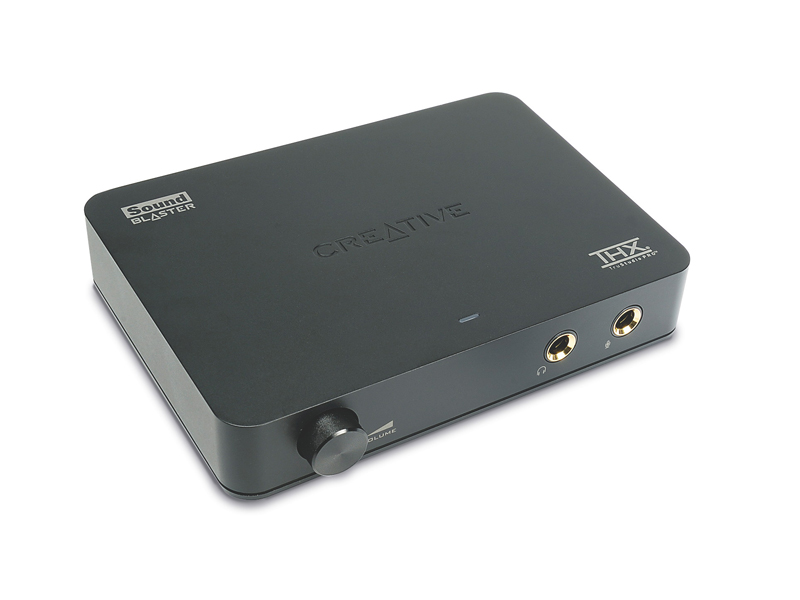TechRadar Verdict
About as good as it gets for laptop audio upgrades, especially for gamers. Not quite as good as it thinks it is, though.
Pros
- +
Good value for the quality
- +
Headphone amp
Cons
- -
Laptop friendly
- -
Can't customise op-amps or impedance
Why you can trust TechRadar
First impressions bear out the claim that Creative's latest USB audio card, the Sound Blaster X-Fi HD, is one for the 'audiophiles'. It looks as clever and understated as a black turtleneck sweater, and the smooth lines of the front are disturbed only by two large 1/4-inch jacks for high impedance headphones that scream quality.
Around the back, there's more to bolster the X-Fi HD's credentials: RCA stereo ports for line-in and out connections and two optical ports for playback and recording digital sources. Inside, the headphone port has its own amplifier.
It may not be quite as intimidating as the studio-grade M-Audio Fast Track Pro external soundcard but, like all X-Fi cards, it comes with the arguably more useful EAX support for games and Creative's THX-certified suite of equaliser options.
Plus, it's considerably cheaper than other high grade USB cards. Got to be worth a look, hasn't it?
We tested the Creative X-Fi HD in the excellent Rightmark audio benchmark and pitted it against the high end X-Fi Titanium HD internal card and the current £25 darling of the audioset, the ASUS Xonar DG. The results were surprisingly lower than we expected. Subjectively, however, it still runs rings around on-board sound.
RMAA Noise level (dBA, lower is better)
X-Fi HD (24bit/96kHz): -96.7dBA
X-Fi Titanium HD (24bit/96kHz): -113.4dBA
Xonar DG (24bit/96kHz):
On-board audio: -90.4dBA
RMAA Total harmonic distortion (%, lower is better)
X-Fi HD (24bit/96kHz): 0.0010%
X-Fi Titanium HD (24bit/96kHz): 0.0020%
Xonar DG (24bit/96kHz): 0.0027%
On-board audio: 0.131%
RMAA Stereo crosstalk (dB, lower is better)
X-Fi HD (24bit/96kHz): -95.3dB
X-Fi Titanium HD (24bit/96kHz):
Xonar DG (24bit/96kHz): -109.2dBA
On-board audio: -89.4dBA
Intermodulation distortion (%, lower is better)
X-Fi HD (24bit/96kHz): 0.0046%
X-Fi Titanium HD (24bit/96kHz): 0.0024%
Xonar DG (24bit/96kHz):
On-board audio: 0.326%
- 1
- 2
Current page: Creative Sound Blaster X-Fi HD review: Overview
Next Page Creative Sound Blaster X-Fi HD review: VerdictThe TechRadar hive mind. The Megazord. The Voltron. When our powers combine, we become 'TECHRADAR STAFF'. You'll usually see this author name when the entire team has collaborated on a project or an article, whether that's a run-down ranking of our favorite Marvel films, or a round-up of all the coolest things we've collectively seen at annual tech shows like CES and MWC. We are one.
